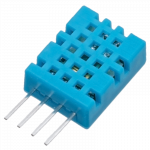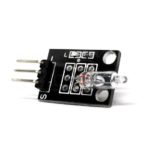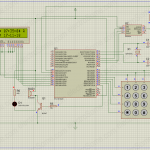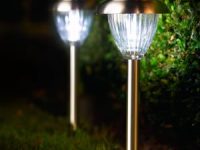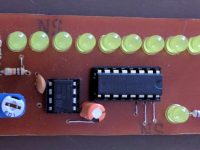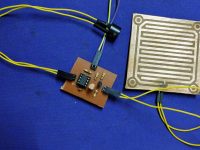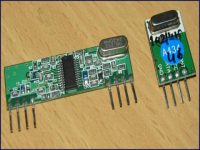What’s Inside an Electrolytic Capacitor?
The aluminium electrolytic capacitor consists of two foils sandwiched between absorbent paper, and wound tightly into a cylinder. The anode, is composed of pure aluminium foil with aluminium oxide formed electrolytically on the surface. The foil has been etched to increase the effective surface area. The cathode is made of high-absorption paper mixed with an electrolyte, in contact with a cathode foil. The electrolyte is used to ensure good contact with the anode, by permeating its etched structure, and also to repair any flaws in the oxide layer when the capacitor is polarised. The function of the aluminium cathode foil is to reduce the series resistance of the capacitor by making contact with the paper over a wide area.  The cathode foil itself has a thin oxide film, and is typically pored to increase the surface area. This gives some capacitance between foil and electrolyte, so that the overall capacitance is that of the anode plus that of the cathode in series. But in practice the cathode film is very thin and its capacitance consequently very high. The anode and cathode foils are covered with paper and wound cylindrically.The complete winding is mixed with an electrolyte, before being held in a suitable container, usually of aluminium, and is then sealed. Before being sleeved and packed, capacitors are first aged. The purpose of this stage is to repair any damage in the oxide layer, and thus reduce the leakage current to very low levels. Damage to the oxide layer can occur due to slitting of the anode foil after forming, attaching the tabs to the anode foil, or minor mechanical damage caused during winding. Normally carried out at the rated top temperature to the capacitor, ageing applies voltage to the device through a current-limited supply, a process that may take several hours to complete.
The cathode foil itself has a thin oxide film, and is typically pored to increase the surface area. This gives some capacitance between foil and electrolyte, so that the overall capacitance is that of the anode plus that of the cathode in series. But in practice the cathode film is very thin and its capacitance consequently very high. The anode and cathode foils are covered with paper and wound cylindrically.The complete winding is mixed with an electrolyte, before being held in a suitable container, usually of aluminium, and is then sealed. Before being sleeved and packed, capacitors are first aged. The purpose of this stage is to repair any damage in the oxide layer, and thus reduce the leakage current to very low levels. Damage to the oxide layer can occur due to slitting of the anode foil after forming, attaching the tabs to the anode foil, or minor mechanical damage caused during winding. Normally carried out at the rated top temperature to the capacitor, ageing applies voltage to the device through a current-limited supply, a process that may take several hours to complete.
Whats in side it?…






